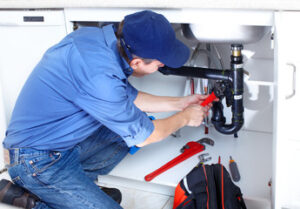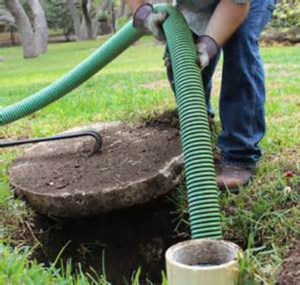Finding professional plumbing solutions for every home ensures that household systems remain functional and efficient. Plumbing plays a vital role in everyday life, from delivering clean water to managing waste and maintaining the comfort of the home.

Professional plumbing services cover a wide range of needs, from simple repairs and maintenance to complex installations and upgrades. Contact Plumbing Express, Inc. for professional help.
Homeowners often overlook the importance of well-maintained plumbing until a problem arises, such as a leak, clogged drain, or malfunctioning water heater. By working with a professional plumber, homeowners can address these issues quickly and efficiently, preventing costly damage and ensuring that the plumbing system operates smoothly.
One of the most common reasons homeowners seek professional plumbing solutions is to address leaks and pipe damage. Even a small leak can lead to significant water waste and structural damage if left untreated. Professional plumbers use advanced tools and techniques to detect hidden leaks and repair damaged pipes without causing unnecessary disruption to the home. They also inspect the plumbing system to identify weak points and potential problem areas, helping homeowners avoid future issues. Replacing old or corroded pipes can improve water pressure and quality, enhancing the overall performance of the plumbing system. Properly sealed pipes also prevent water damage to walls, floors, and foundations, protecting the integrity of the home.
Drain clogs and slow drainage are other common issues that require professional attention. Hair, grease, soap residue, and foreign objects can accumulate in pipes, restricting the flow of water and causing unpleasant odors. While store-bought drain cleaners may provide temporary relief, they often fail to address the root cause of the problem and can damage pipes over time. Professional plumbers use specialized equipment, such as hydro-jetting and drain snakes, to remove stubborn clogs and clear debris from the plumbing system. They also inspect the pipes for cracks, misalignment, and tree root intrusion, ensuring that the drainage system functions properly. Regular drain cleaning and maintenance prevent backups and keep the plumbing system running smoothly.
Water heater issues are another area where professional plumbing solutions are essential. A malfunctioning water heater can result in inconsistent water temperature, reduced water pressure, and increased energy bills. Professional plumbers are trained to diagnose and repair various water heater problems, from faulty thermostats and heating elements to sediment buildup and leaks. They also advise homeowners on whether to repair or replace the unit based on its age, condition, and efficiency. Upgrading to an energy-efficient water heater can improve performance and reduce utility costs, providing long-term benefits. Professional installation ensures that the unit is properly connected to the plumbing system and meets safety standards, giving homeowners peace of mind.
Bathroom and kitchen plumbing installations require the expertise of a professional plumber to ensure proper function and longevity. Installing new sinks, faucets, toilets, and showers involves more than just connecting pipes; it requires careful measurement, alignment, and sealing to prevent leaks and ensure smooth operation. Professional plumbers also install garbage disposals, dishwashers, and water filtration systems, integrating them seamlessly into the existing plumbing network. They test all connections and fixtures to ensure proper water flow and drainage, making adjustments as needed to optimize performance. Professional installation not only enhances the functionality of the home but also increases its value and appeal.
Sewer line problems can cause serious damage if not addressed promptly by a professional plumber. Tree roots, soil shifting, and pipe corrosion can lead to cracks and blockages in the sewer line, resulting in foul odors, slow drains, and sewage backups. Professional plumbers use video inspection technology to locate the source of the problem and recommend the most effective solution. Trenchless repair methods minimize disruption to the property while restoring the integrity of the sewer line. Regular inspections and maintenance help prevent costly repairs and keep the sewer system operating efficiently. Professional plumbers also advise homeowners on proper waste disposal and drainage practices to reduce the risk of future blockages.
Plumbing emergencies, such as burst pipes, overflowing toilets, and gas leaks, require immediate professional attention. A professional plumber responds quickly to minimize water damage and restore the plumbing system to working order. They have the experience and equipment to handle complex emergencies, including shutting off the main water supply, replacing damaged pipes, and repairing fixtures. Emergency plumbing services are available 24/7, providing homeowners with peace of mind that help is available when they need it most. Professional plumbers also assess the cause of the emergency and recommend preventive measures to avoid recurrence.
Maintaining water quality is another important aspect of professional plumbing services. Hard water, which contains high levels of minerals such as calcium and magnesium, can cause scale buildup in pipes and appliances, reducing efficiency and lifespan. Professional plumbers install and maintain water softeners and filtration systems to improve water quality and protect the plumbing system. They also test for contaminants and advise homeowners on the best solutions for their specific water supply. Clean, soft water enhances the taste and safety of drinking water while protecting plumbing fixtures and appliances from damage.
Outdoor plumbing systems, including irrigation, sprinkler systems, and outdoor faucets, also require professional care. Leaking or damaged outdoor pipes can waste water and affect landscaping health. Professional plumbers inspect and repair outdoor plumbing systems to ensure proper water flow and coverage. They adjust sprinkler heads, repair leaks, and install backflow prevention devices to protect the water supply from contamination. Seasonal maintenance, such as winterizing outdoor pipes, prevents freezing and bursting during cold weather. Properly maintained outdoor plumbing enhances the appearance and health of the home’s exterior.
Professional plumbers also assist with home renovations and remodeling projects. Upgrading bathrooms, kitchens, and laundry rooms often requires reconfiguring plumbing lines and installing new fixtures. A professional plumber works closely with contractors and designers to ensure that the plumbing system meets building codes and supports the new layout. They advise on fixture placement, water pressure requirements, and drainage solutions, helping homeowners achieve their design goals while maintaining functional plumbing. Professional installation and inspection ensure that the new plumbing system operates efficiently and meets safety standards.
Leak detection technology is an important tool used by professional plumbers to identify hidden leaks and prevent water damage. Infrared cameras, acoustic sensors, and pressure testing equipment allow plumbers to locate leaks behind walls, under floors, and in underground pipes. Early detection and repair prevent structural damage and mold growth, preserving the integrity of the home. Professional plumbers also install smart leak detection systems that alert homeowners to potential issues, allowing them to address problems before they escalate. Regular leak detection and maintenance save water and reduce repair costs over time.
Plumbing maintenance contracts offer homeowners peace of mind by providing regular inspections and service for their plumbing systems. Professional plumbers create customized maintenance plans based on the age and condition of the plumbing system. Regular maintenance includes checking for leaks, cleaning drains, inspecting water heaters, and testing water quality. Professional plumbers also advise homeowners on how to care for their plumbing systems, such as avoiding harsh chemical drain cleaners and monitoring water pressure. A proactive maintenance plan reduces the risk of emergencies and extends the lifespan of the plumbing system.
Working with a professional plumber provides long-term benefits for homeowners. Professional plumbers have the training, experience, and equipment to handle a wide range of plumbing issues, from routine maintenance to complex repairs. They ensure that the plumbing system operates efficiently and meets safety standards, protecting the home and its occupants. Professional plumbing solutions improve water quality, reduce utility costs, and prevent costly damage. By investing in professional plumbing services, homeowners can enjoy a reliable and functional plumbing system for years to come.
